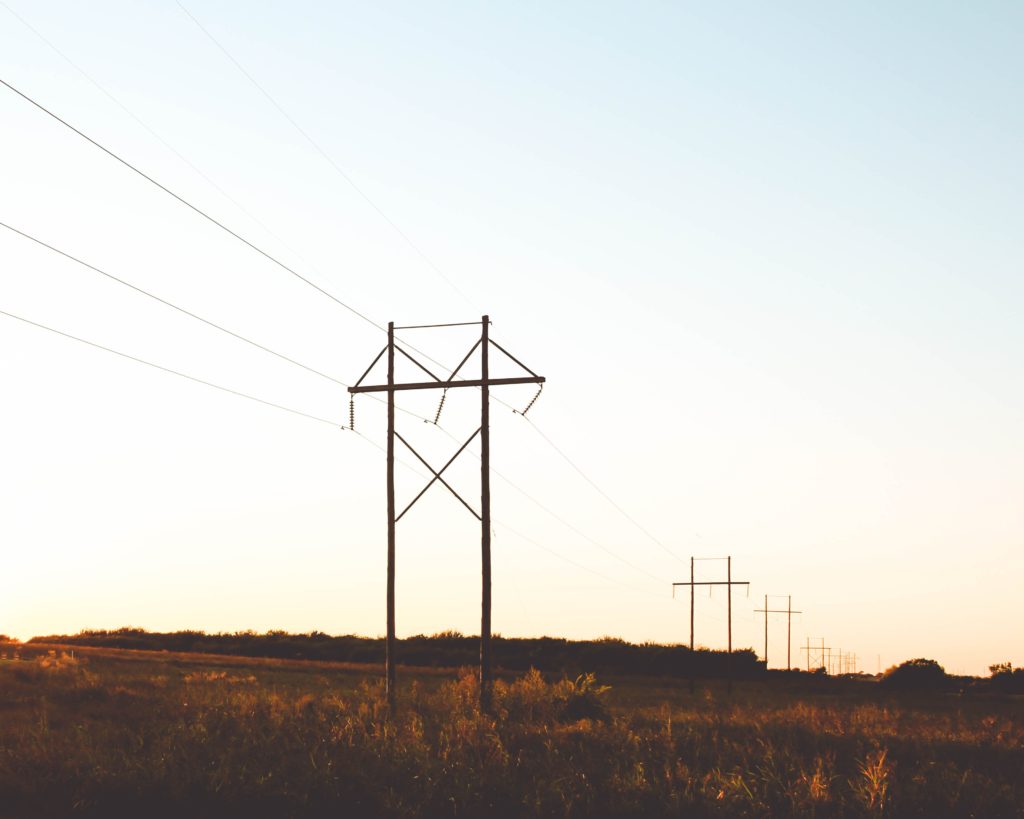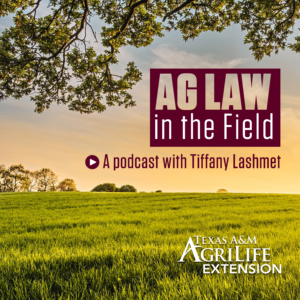
The Texas Supreme Court recently reversed two lower court decisions in Southwestern Electric Power Co. v. Lynch, involving a question of the allowable width of a general easement. Although both the trial court and appellate court sided with the landowner and would limit the width of the easement, the Supreme Court disagreed and ruled in favor of the transmission line company, refusing to limit the allowable width of the general easement.

Photo by Esther Ramirez on Unsplash
Background
Three landowners in Bowie County own land burdened by a utility easement held by Southwestern Electric Power Company (“Company”). The easements were granted to the Company’s predecessor in 1949 by the landowners’ predecessors in title. The easement document provides as follows:
“[A]n easement or right-of-way [is granted to Southwestern Gas & Electric Company] for an electric transmission and distributing line, consisting of variable numbers of wires, and all necessary or desirable appurtenances (including towers or poles made of wood, metal or other materials, telephone and telegraph wires, props and guys), at or near the location and along the general course now located and staked out by the said Company over, across and upon the following described lands . . . .Together with the right of ingress and egress over my (our) adjacent lands to or from said right-of-way for the purpose of constructing, reconstructing, inspecting, patrolling, hanging new wires on, maintaining and removing said line and appurtenances . . . .”
Importantly, none of the documents specified a width of the easement.
In 1949, the Company constructed a wooden-pole transmission line. The Company has continued to use the easement to maintain the line following the same general path since the line’s construction.
In 2014, the Company began a project to rebuild and modernize the transmission line, replacing wooden poles with steel. The Company sent landowners a letter informing them of the planned modernization of the line and offering each of them $1,000 in exchange for supplementing the existing easement to include additional terms. Specifically, the supplemental agreement would have expressly included a width of 100′.
The plaintiff landowners refused to sign the supplemental agreement, but the Company entered their property and upgraded regardless, under the original terms of the 1949 easement.
Lawsuit
Landowners filed a declaratory judgment action seeking a ruling that the Company’s easement was limited to 30-feet wide, fifteen feet on each side of the transmission line. The rationale for this limitation was the Company had only ever used thirty feet for the transmission line, and the landowners argued, that should be the maximum amount of land they are allowed to use in the future.
A bench trial was held. Over objection, the judge allowed extrinsic evidence from the landowners as to the historical use of the easement. The Company maintained the general easement it has for the property is not limited to a specific width, but instead gives the Company the right to access the property as much as is reasonably necessary for the purposes specified in the easement. The court found the Company had only used 30′ in the past and limited future use to the same width.
The Company appealed and the Texarkana Court of Appeals affirmed. [Read prior blog post here.] The Court of Appeals held the general easement described a “framework or skeleton of the easement conveyed without describing the width” and, therefore, extrinsic evidence of historic use was admissible. Further, the court held once the Company had built and maintained the transmission line, “its rights under the easements became fixed and certain.” Thus, the Court of Appeals affirmed.
The Company appealed to the Texas Supreme Court.
Supreme Court Opinion
Initially, the Court ruled this was a ripe controversy over which the trial court had subject matter jurisdiction and was authorized to rule upon.
Moving to the substance of the case, the court noted the easement essentially grants to the Company two rights: (1) the right-of-way on the property on which it may construct a transmission line upon a particular course; and (2) the right of ingress and egress over the property adjacent to the right-of-way. The easement does not specify the maximum width of the easement, nor does the easement specify how much land the Company may use for ingress and egress.
The legal issue before the Court is whether the trial court was correct to admit extrinsic evidence to determine the scope of the easement. The court determined that, at least under the language at issue in this case, the lack of a specified width in an easement does not mandate the admission of extrinsic evidence to prescribe a width. Determining a limited width where the parties did not negotiate for or agree on one, the Court reasons, is not something a court is required to do.
The Court stated, “We see no reason to disturb this Court’s…long-standing treatment of general easements in Texas. The starting point of any exercise in easement construction is the same as for contract interpretation: the easement’s plain language. If the easement’s terms are ascertainable and can be given legal effect, courts will not supplant the easement’s express terms with additional terms nor consult extrinsic evidence to discern the easement’s meaning. Parties who enter into easements are certainly capable of writing a fixed width into the easement. That is their prerogative. But as the prior cases demonstrate, sometimes parties to an easement account for anticipated developments in technology and demand by not fixing an easement’s width. The use of a general easement without a fixed width is a strategic decision that does not render an easement ambiguous or require a court to supply the missing term.”
Further, with regard to the landowners in this case, the court noted they purchased the property already subject to this easement, which did not specify a width. The landowners were free to re-negotiate with the Company to limit the width of the easement–which the Company sought to do with their 100′ offer–but the parties refused. As a result, “the Landowner’s properties remain burdened by general easements with no fixed width.”
Lastly, the Court noted the landowners are not without recourse as to the Company’s future use of the easement because the holder of a general easement must utilize the land in a reasonable manner and only to the extent that the use is reasonably necessary. This, the Court says, the landowner has the right to pursue recourse if the grantee utilizes the land in an unreasonable or unnecessary manner. If, at some point in the future, the landowners believe the Company is utilizing the easement in a way that is unreasonable, not reasonably necessary, or that violates the express terms of the easements, the landowners may bring suit to enjoin the Company’s use of the easements.
Takeaways
This case illustrates the importance of detailed terms, such as a set limitation of width, in every easement agreement. The chances of the Court implying limiting terms into a general easement appear extremely unlikely given this opinion.
If a landowner is negotiating an easement agreement, including specific, measurable terms is critical to ensure these limitations exist. Keep in mind that the first easement offer from the pipeline or transmission line company will likely not have these types of limiting terms included–landowners must negotiate for them! For more information on that, be sure to read the chapter on Easement and Transmission Line Easements in my Owning Your Piece of Texas handbook.
For landowners who may have general easements already burdening their property, this case indicates there likely two options for imposing limitations: (1) renegotiate the agreement to include specific limitations or (2) seek an injunction if the easement holder is using the land in an unreasonable manner or in violation of the express terms of the agreement.
Lastly, one issue that was not discussed in this opinion is that the easement contained the language “at or near the location and along the general course now located and staked out by the said Company.” What was the width of the easement that was staked out in 1949? Could this have been an attempt by the parties to identify a width of the easement? We do not know these answers, but it does offer us another lesson. Terms in an easement must be carefully drafted, measurable, precise, and able to be determined from the text of the easement itself, even 70 years later. This is why I always recommend that landowners consider hiring an attorney to help with negotiating and drafting easement agreements.
***UPDATE***
We are excited to also offer an Online Owning Your Piece of Texas course. This 8.5 hour class is on demand, allowing you to watch whenever and wherever you would like. The online course, taught by Tiffany Dowell Lashmet, will cover every topic included in the Owning Your Piece of Texas handbook. For more information or to register, click here.












